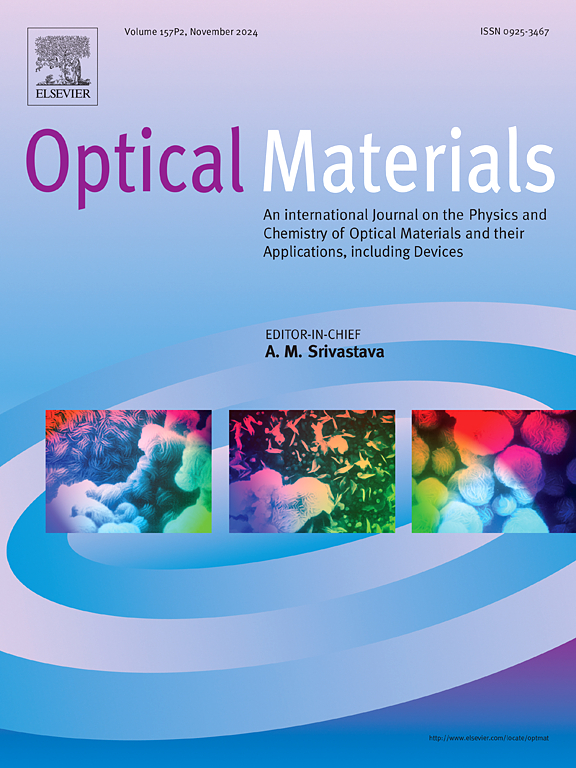Chemical durability of optical temperature sensors made of tellurite glass: Effect of the alumina concentration
IF 3.8
3区 材料科学
Q2 MATERIALS SCIENCE, MULTIDISCIPLINARY
引用次数: 0
Abstract
Tellurite glass is an amorphous material commonly doped with rare earth ions for the development of optical temperature sensors. Considering the intrinsic properties of glasses, it is expected that these sensors could be used in acidic environments and withstand temperature changes. However, this has not been fully demonstrated since most of the literature is limited to demonstrate the sensor operation under normal conditions. Additionally, there is a lack of information regarding the chemical durability of these glasses and methods to improve it. In this work, a special tellurite glass composition was proposed for the development of optical temperature sensor. The effect of the alumina concentration on the structure, chemical durability and emission properties of the glasses was evaluated. Chemical durability was assessed by monitoring the weight loss of glass samples after immersion in hydrochloric acid solutions at room temperature, vegetable oil or air at 150 °C. The results indicate that the addition of alumina increases the chemical durability of the glass and improves its emission properties. It was found that the average temperature estimated by the optical sensor had a relative error of 1.3 % due to the degradation of the glass caused by remaining immersed in a 1 N HCl solution for 60 days.
碲玻璃光学温度传感器的化学耐久性:氧化铝浓度的影响
碲玻璃是一种无定形材料,通常掺杂稀土离子,用于开发光学温度传感器。考虑到玻璃的固有特性,预计这些传感器可用于酸性环境,并能承受温度变化。然而,由于大多数文献仅限于展示传感器在正常条件下的工作情况,这一点尚未得到充分证明。此外,有关这些玻璃的化学耐久性和改进方法的信息也很缺乏。在这项工作中,为开发光学温度传感器提出了一种特殊的碲玻璃成分。评估了氧化铝浓度对玻璃结构、化学耐久性和发射特性的影响。化学耐久性是通过监测玻璃样品在室温盐酸溶液、植物油或 150 °C 空气中浸泡后的重量损失来评估的。结果表明,添加氧化铝可提高玻璃的化学耐久性并改善其发射特性。研究发现,由于玻璃在 1 N 盐酸溶液中浸泡 60 天后会发生降解,因此光学传感器估计的平均温度相对误差为 1.3%。
本文章由计算机程序翻译,如有差异,请以英文原文为准。
求助全文
约1分钟内获得全文
求助全文
来源期刊

Optical Materials
工程技术-材料科学:综合
CiteScore
6.60
自引率
12.80%
发文量
1265
审稿时长
38 days
期刊介绍:
Optical Materials has an open access mirror journal Optical Materials: X, sharing the same aims and scope, editorial team, submission system and rigorous peer review.
The purpose of Optical Materials is to provide a means of communication and technology transfer between researchers who are interested in materials for potential device applications. The journal publishes original papers and review articles on the design, synthesis, characterisation and applications of optical materials.
OPTICAL MATERIALS focuses on:
• Optical Properties of Material Systems;
• The Materials Aspects of Optical Phenomena;
• The Materials Aspects of Devices and Applications.
Authors can submit separate research elements describing their data to Data in Brief and methods to Methods X.
 求助内容:
求助内容: 应助结果提醒方式:
应助结果提醒方式:


